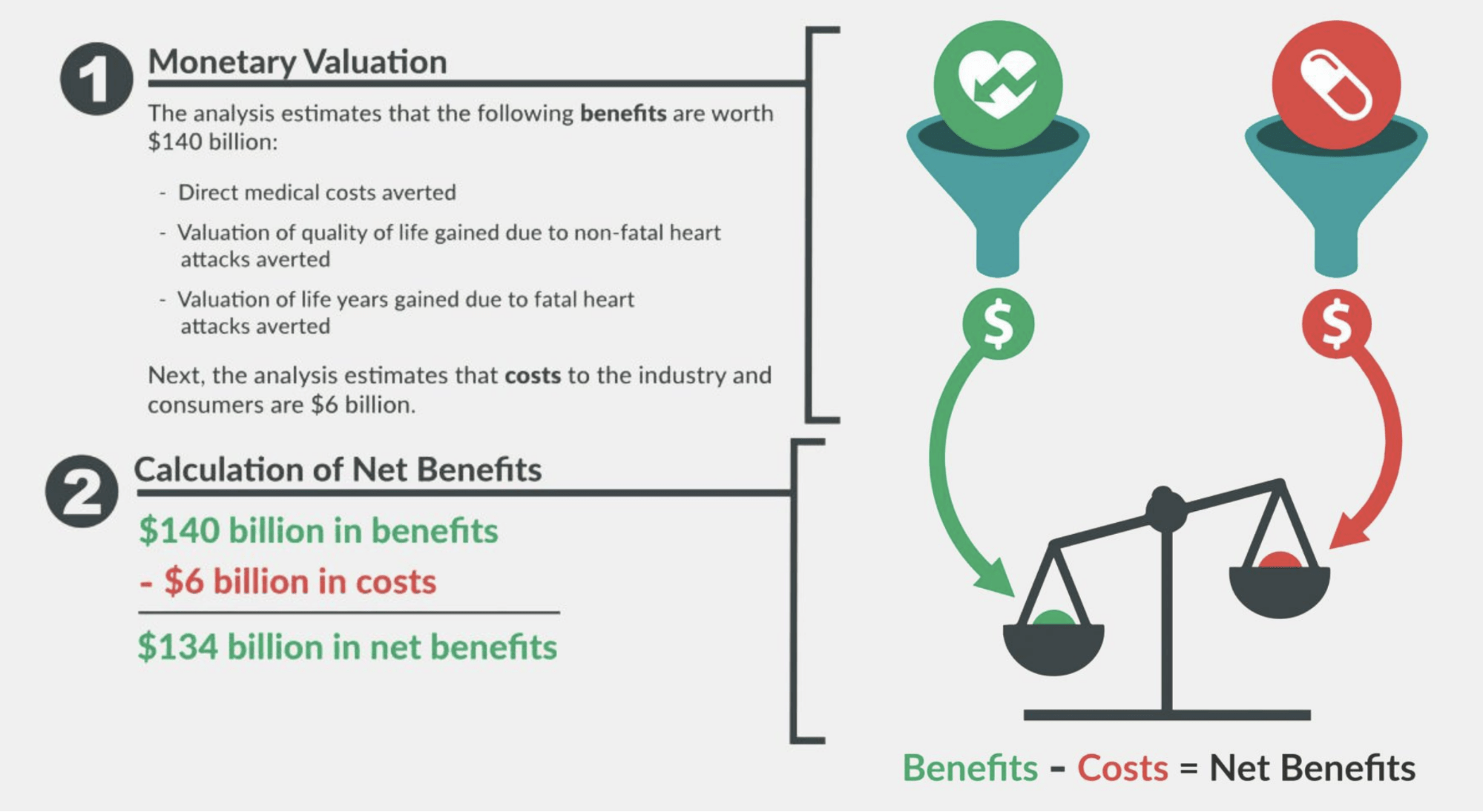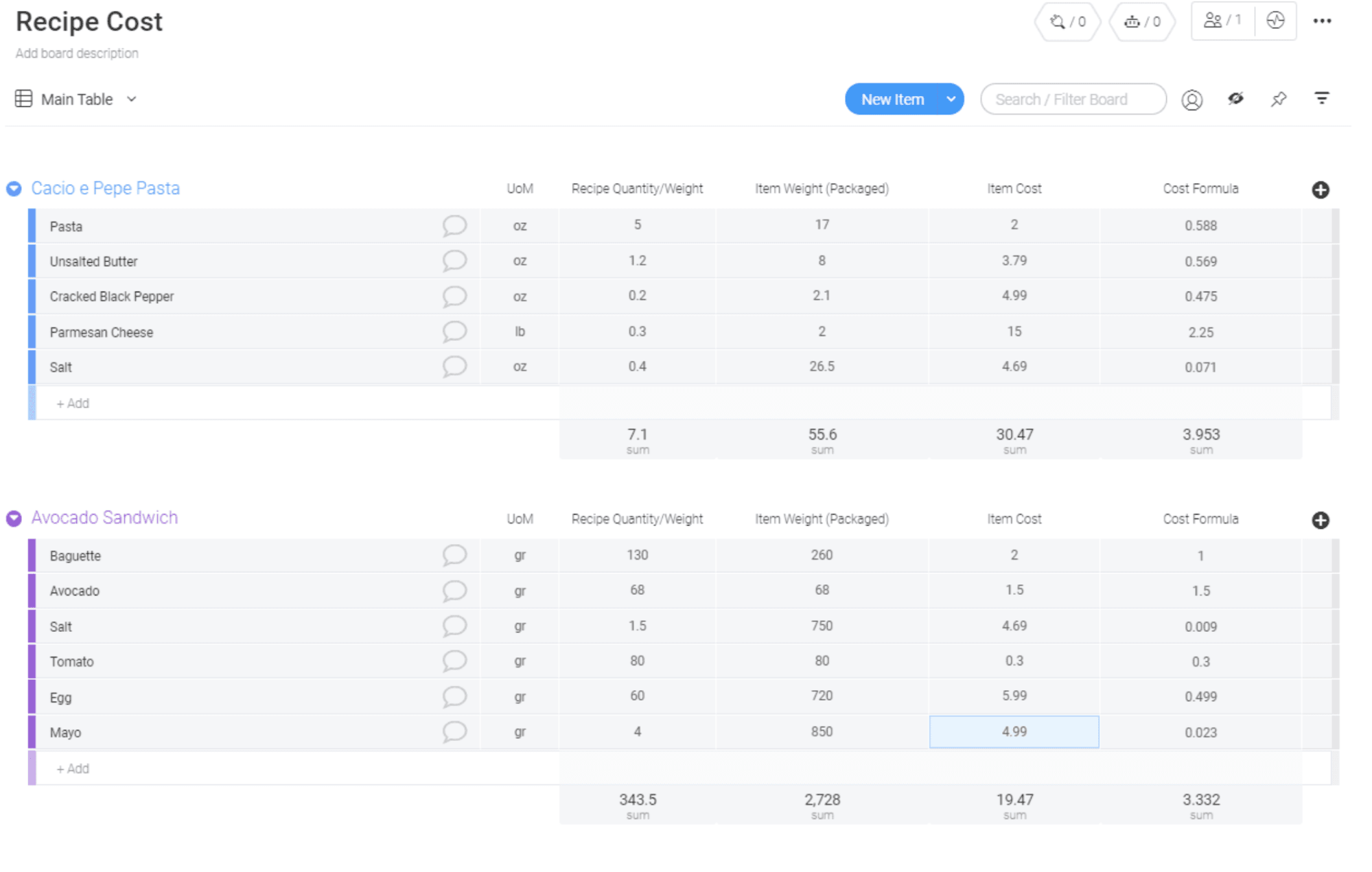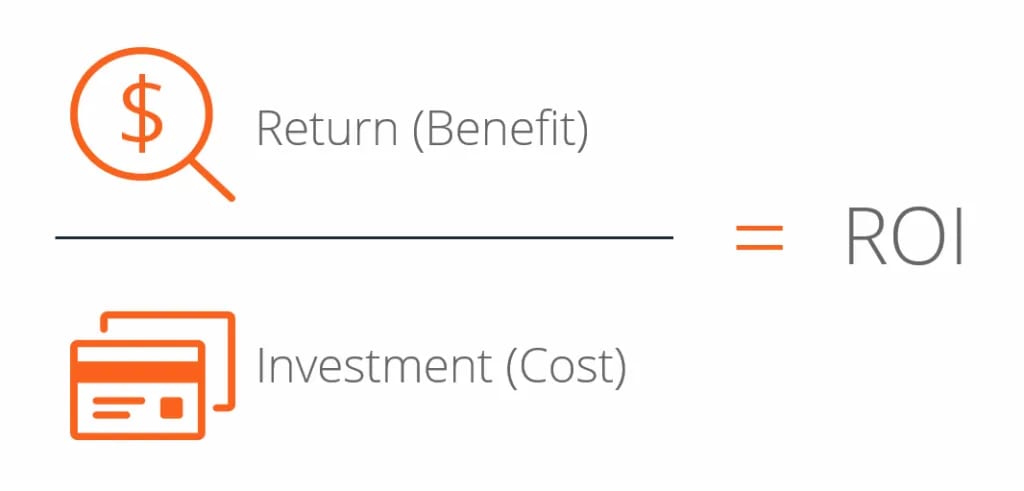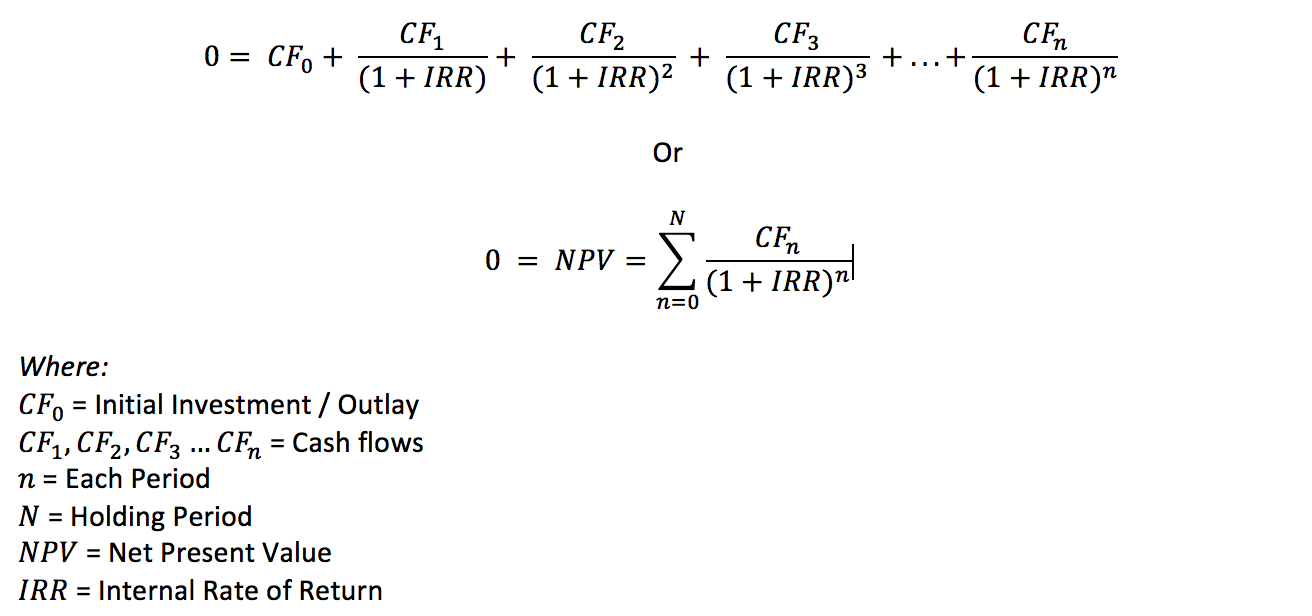It doesn’t matter what your team does or what industry you’re working in: time is money.
That’s why most organizations can’t afford to waste time, funding, and resources on projects that aren’t going to pay off in the long-run.
But you’re probably asking yourself: “how can I figure out whether a project is going to be worthwhile before I’ve invested loads of time and money in it?”
The answer: perform a cost benefit analysis.
This guide will explain what a cost benefit analysis is, how to perform a cost benefit analysis, the different methodologies you can use, and how monday.com can simplify the cost benefit analysis process.
What is a cost benefit analysis?
A cost benefit analysis (CBA) is a comparison of your organization’s costs and benefits. The process itself is pretty straightforward.
First, you tally up all of the projected or estimated costs you expect to incur over the course of a project, and then add up all the benefits you’re expecting.
Finally, you subtract your net cost from your net benefit to get a number or cost benefit ratio. That number can then help you to decide the project’s cost effectiveness.
For example, let’s say you run a public relations firm and you’re thinking about taking on a marketing campaign with a big-name client.
If you were to conduct a cost benefit analysis, you might find that the project itself is expected to cost you $15,000 in resources.
But the client is going to pay you $20,000, and there’s a strong potential for additional business after delivery.
In this case, it looks like the expected benefits of taking on this marketing campaign outweigh the costs — so it sounds like a winner on paper.
But if the costs of taking on a project like that were to outweigh the benefits, it’d mean you may want to rethink your involvement.

In addition to helping you determine whether a project is justifiable or feasible, performing a cost benefit analysis will also enable you to create a baseline by which you can compare the costs and benefits of other projects.
How? By conducting a systematic approach to pre-plan what a project will cost and what it’ll bring in, you’ll be able to develop a point of reference for each additional project you’d like to analyze.
A cost benefit analysis can be super simple to perform. But it’s worth bearing in mind that there are loads of different methodologies and measurements you can use to do a project CBA. It can be as easy or as complicated as you want to make it.
We’ll break those different methods down for you in just a minute. First, let’s take a look at the basic building blocks of a standard cost benefit analysis.
How do you perform a cost benefit analysis?
OK, so we know that your business and the projects you undertake are totally unique. That means you’re going to have totally different costs and benefits than other organizations.
But no matter what your overheads or your targets look like, the cost benefit analysis process that you should be using is pretty straightforward.
There are only 4 steps involved, and we’re happy to walk you through each one.
1. Establish a framework
If you want your cost benefit analysis to be accurate, you’re going to need to set up a framework for your analysis. That means identifying all of the goals you want your CBA to achieve.
Think hard about what you want your project to achieve. This will enable you to better identify your costs and benefits.
Next, you’ll have to choose a metric for measuring and comparing your costs and benefits.
If you want your analysis to be fair and accurate, you’ll need to assign a common currency to both costs and benefits.
That doesn’t mean you need to assign a monetary value to them, but that does make it a lot easier. It just needs to be something that lets you compare apples to apples.
2. Identify costs and benefits
After building a framework, it’s time to make your lists. One list should include all the projected costs of your project. The other list should include all of the projected benefits you expect to gain.
That sounds really simple at first glance, but think hard about both lists. There are a few different kinds of costs and benefits, and they’re not always obvious.
Here are a few different types of costs you’ll want to consider:
- A direct cost like labor, manufacturing costs, materials, or inventory
- An indirect cost like utilities, or rent for your premises
- Intangible costs like a decrease in productivity levels if you divert your resources to a new project
- An opportunity cost like how much money you stand to lose by choosing one project over another

The same logic applies to benefits. Sometimes, the benefits your business stands to gain from a project are a little bit more complicated.
Different benefit types might include:
- Direct benefits like increased sales or revenue from completing a new project
- Indirect benefits like increased brand interest after finishing a successful project
- Intangible benefits like enhanced team morale
- Competitive benefits like becoming the first within your industry to tap into a new market
You might find that not all of these cost or benefit types apply to a project. But you should always do your best to make your lists as complete as possible.
3. Assign value
After you’ve created 2 exhaustive lists of your costs and benefits, you’ve got to assign a common currency or monetary term to both lists so you can compare them.
Again, assigning a monetary unit to your list items will make this exercise a whole lot easier — but that’s not always practical.
You could also compare hours spent, stock quantities, or anything else that makes sense to your business and will enable you to do an effective CBA.
4. Work out your values and compare
After you’ve completed your lists and assigned a common currency, it’s time to tally up both lists and compare them.
If the total of your benefits list is bigger, there’s a good business case for you to go ahead with the project. If the expected costs outweigh the benefits, you may want to think twice about taking on this particular project.
Alternatively, you may just want to go back to your costs list and consider the places and ways in which you can shave your costs to make the project more economically viable.
Now, there are a couple of different methods you can use to compare your costs and benefits — but we’ll get to that in a second.
After working out your comparison, it’s also worth revisiting your framework in step one to make sure that the project is compatible with your goals and your strategy.
What methods can you use for a cost benefit analysis?
A cost benefit analysis has the same goal no matter how it’s performed: to figure out whether the cost of a project outweighs the benefits.
But it’s important to remember that there are different methods you can use to carry out a cost benefit analysis depending on what’s important to you.
Some of these methods are pretty easy for you to do with the calculator on your phone. Others are going to require some kind of confusing algebraic formulas.
To help you get started, we’ll cover the 3 most basic cost benefit analysis methodologies.
Net present value (NPV)
When most people do a cost benefit analysis, they’re looking at something called net present value (NPV).
Net present value is just a fancy way of describing the difference between costs and benefits as they occur over a period of time. NPV is used in loads of financial models when a company wants to assess whether an investment is going to pay off over time.
To work out your net present value, you’ll need to find the difference between your present cash inflows and your outflows over a period of time.
The formula to find that difference is:

In this formula, “i” represents a discount rate, and “t” represents your chosen time period.
Confused? It makes more sense if you look at a quick example.
Let’s say you’re considering a project that costs $1,000. You’re expecting the project to generate cash flows of $1,300 over the next year — and the rate of return you’re wanting to see is 8%.
You’d calculate your net present value by adding 1 to 0.8, and then taking it to the first power (for your time period of 1 year). Divide your cash flow ($1,300) by that number, and you’ve got $1,203.70. Finally, subtract your initial investment ($1,000) from that number.
You’re left with $203.70. That means the project you’re working on is leaving you $203.70 in the black as of right this minute.
Why isn’t it $300? ($1,300 in benefits – $1,000 in costs)
Because $300 in one year is only worth $203.70 in your pocket today. Remember: time is money.
Return on investment (ROI)
Head spinning from net present value? Don’t worry, because the next cost benefit analysis method is return on investment (ROI). Chances are, you know all about this one.
ROI is just your net income divided by the cost of an investment. This equation will leave you with a ratio or percentage that will tell you how big of a return you’re getting on each dollar you invest in a project.

That’s pretty much all there is to it. ROI is one of the simplest ways to conduct a cost benefit analysis — which is why it’s so popular.
Internal Rate of Return (IRR)
Missing your high school algebra? Internal rate of return (IRR) will take us right back there again.
IRR is the discount rate a company uses to make the net present value of a project 0.
Translation: internal rate of return is basically just the expected annual rate of return you’re going to get on a project.
IRR is ideal for analyzing big budgets and comparing returns over time — but calculating it manually can be pretty difficult.
The formula is:

Don’t worry — we’ll do another quick example.
Let’s go back to that $1,000 project example we were talking about earlier. We know the NPV is $203.70, right?
Well, to figure out IRR, we want to make the NPV zero. Then, replace your discount rate of 8% with IRR. You then have to solve for your IRR using this equation: 0 = -$1,000 + $1,300(1 + IRR).
If you’re doing it right, you should end up with an IRR of 0.3. That means your project will give you an annual growth rate of 30%.
But because it’s so tricky to calculate, project managers will often use Excel or a project management platform capable of calculating the formula automatically to figure out IRR.
How to perform a cost benefit analysis with monday.com
OK: so hopefully, we didn’t scare you with all of that algebra. We just wanted to give you all the facts on this one.
But the truth is, if you want to perform a quick, efficient, and correct cost benefit analysis without the help of Albert Einstein, you’re going to need an amazing Work OS with the built-in functionality required to compare your potential cost and benefits.

If that’s a problem you’re facing, monday.com is the solution. Our Project Cost Management Template is specifically designed to help you:
- Assess your problems and their organizational impact
- Develop goals and objectives
- Set project milestones
- Identify key stakeholders
- Run a cost-benefit analysis
Toss in dozens of app integrations and some stellar customer service, and you’ll be left wondering why on earth you’d ever want to waste time doing a manual cost benefit analysis ever again.
By using monday.com, you’ll be able to stay on top of your project costs and attain your objectives — without giving yourself an algebraic migraine.It’s time to work smart
At the end of the day, conducting a cost benefit analysis (CBA) is always the smart move before agreeing to take on a new project. It gives you an opportunity to measure your costs against your benefits and decide how viable a project truly is.
But if you want to do an effective CBA without a certified genius on your team, you’ve got to have a reliable platform to help you out. We don’t like to brag, but monday.com is the perfect platform.
Don’t just take out word for it. Try monday.com now to conduct your cost benefit analysis and start saving your time and sanity.

